Strength, Carbonation Resistance, and Chloride-Ion Penetrability of Cement Mortars Containing Catechol-Functionalized Chitosan Polymer
Abstract
:1. Introduction
2. Materials and Experimental Methods
2.1. Materials
2.2. Mix Proportions and Specimen Preparation
3. Experimental Results and Discussion
3.1. CCP Synthesis
3.2. CCP Characterization
3.3. Mortar Flow
3.4. Compressive Strength
3.5. Tensile Strength
3.6. Drying Shrinkage
3.7. Accelerated Carbonation Depth
3.8. Chloride-Ion Penetrability
4. Conclusions
Author Contributions
Funding
Institutional Review Board Statement
Informed Consent Statement
Data Availability Statement
Acknowledgments
Conflicts of Interest
References
- Jang, I.; Son, D.; Ryu, Y.; Park, W.; Yi, C. Strength and healing performance of the mortar using bacterial pellet as a self-healing material. J. Rec. Const. Res. 2020, 8, 112–119. [Google Scholar]
- Luo, M.; Qian, C.X.; Li, R.-Y. Factors affecting crack repairing capacity of bacteria-based self-healing concrete. Constr. Build. Mater. 2015, 87, 1–7. [Google Scholar] [CrossRef]
- Alghamri, R.; Kanellopoilos, A.; Al-Tabbaa, A. Impregnation and encapsulation of lightweight aggregates for self-healing concrete. Constr. Build. Mater. 2016, 124, 910–921. [Google Scholar] [CrossRef]
- Souradeep, G.; Kua, H.W. Encapsulation technology and techniques in self-healing concrete. J. Mater. Civ. Eng. 2016, 28, 04016165. [Google Scholar] [CrossRef]
- Vijay, K.; Murmu, M.; Deo, S.V. Bacteria based self-healing concrete–a review. Constr. Build. Mater. 2017, 152, 1008–1014. [Google Scholar] [CrossRef]
- Sik, W.H.; Sun, P.B.; Won, Y.S.; Chel, C.Y. Crack self-healing performance according to absorption test of fiber-reinforced concrete. J. Korea Inst. Struct. Maint. Insp. 2019, 23, 122–129. [Google Scholar]
- Bezerra, U.T.; Ferreira, R.M.; Castro-Gomes, J.P. The effect of latex and chitosan biopolymer on concrete properties and performance. Key Eng. Mater. 2011, 466, 37–46. [Google Scholar]
- Kumar, R. A review on epoxy and polyester based polymer concrete and exploration of polyfurfuryl alcohol as polymer concrete. J. Polym. 2016, 2016, 7249743. [Google Scholar] [CrossRef]
- Novoa, P.J.R.O.; Riveiro, M.C.S.; Ferreira, A.J.M.; Marques, A.T. Mechanical characterization of lightweight polymer mortar modified with cork granulates. Compos. Sci. Technol. 2004, 64, 2197–2205. [Google Scholar] [CrossRef]
- Choi, S.; Hong, B.; Lee, S.; Won, J. Shrinkage and corrosion resistance of amorphous metallic-fiber-reinforced cement composites. Compos. Struct. 2014, 107, 537–543. [Google Scholar] [CrossRef]
- Cho, B.; Park, S.; Park, J. Mechanical properties of polymer concrete made with recycled PET and recycled concrete aggregates. Constr. Build. Mater. 2008, 22, 2281–2291. [Google Scholar]
- Ferdous, W.; Manalo, A.; Wong, H.S.; Abousnina, R.; Ajarmeh, O.S.A.I.; Zhuge, Y.; Schubel, P. Optimal design for epoxy polymer concrete based on mechanical properties and durability aspects. Constr. Build. Mater. 2020, 232, 117229. [Google Scholar] [CrossRef]
- Azadmanesh, H.; Hashemi, S.A.H.; Ghasemi, S.H. The effect of styrene-butadiene rubber and ethylene vinyl acetate polymers on the mechanical properties of Engineered Cementitious Composites. Compos. Commun. 2021, 24, 100656. [Google Scholar] [CrossRef]
- Mohesson, H.M.; Abbas, W.A. Effect of biopolymer alginate on some properties of concrete. J. Eng. 2020, 26, 121–131. [Google Scholar] [CrossRef]
- Shanmugavel, D.; Selvaraj, T.; Ramadoss, R.; Raneric, S. Interaction of a viscous biopolymer from cactus extract with cement paste to produce sustainable concrete. Constr. Build. Mater. 2020, 257, 119585. [Google Scholar] [CrossRef]
- Snoeck, D.; Moerkerke, B.; Mignon, A.; De Belie, N. In-situ crosslinking of superabsorbent polymers as external curing layer compared to internal curing to mitigate plastic shrinkage. Constr. Build. Mater. 2020, 262, 120819. [Google Scholar] [CrossRef]
- Mignon, A.; Vermeulen, J.; Snoeck, D.; Dubruel, P.; Van Vlierberghe, S.; De Belie, N. Mechanical and Self-healing properties of cementitious materials with pH-responsive semi-synthetic superabsorbent polymers. Mater. Struct. 2017, 50, 238. [Google Scholar] [CrossRef]
- Mignon, A.; Snoeck, D.; D’Halluin, K.; Balcaen, L.; Vanhaecke, F.; Dubruel, P.; Van Vlierberghe, S.; De Belie, N. Alginate biopolymers: Counteracting the impact of superabsorbent polymers on mortar strength. Constr. Build. Mater. 2016, 110, 169. [Google Scholar] [CrossRef]
- Wang, J.; Mignon, A.; Snoeck, D.; Wiktor, V.; Boon, N.; De Belie, N. Application of modified-alginate encapsulated carbonate producing bacteria in concrete: A promising strategy for crack self-healing. Front. Microbiol. 2015, 6, 1088. [Google Scholar] [CrossRef] [Green Version]
- Ryu, J.H.; Lee, Y.; Kong, W.H.; Kim, T.G.; Park, T.G.; Lee, H. Catechol-functionalized chitosan/pluronic hydrogels for tissue adhesives and hemostatic materials. Biomacromolecules 2011, 12, 2653–2659. [Google Scholar] [CrossRef]
- Xu, J.; Strandman, S.; Zhu, J.X.X.; Barralet, J.; Cerruti, M. Genipin-crosslinked catechol-chitosan mucoadhesive hydrogels for buccal drug delivery. Biomaterials 2015, 37, 395–404. [Google Scholar] [CrossRef]
- Kean, T.; Thanou, M. Biodegradation, biodistribution and toxicity of chitosan. Adv. Drug Deliv. Rev. 2010, 62, 3–11. [Google Scholar] [CrossRef] [PubMed]
- Dufes, C.; Muller, J.M.; Couet, W.; Olivier, J.C.; Uchegbu, I.F.; Schatzlein, A.G. Anticancer drug delivery with transferrin targeted polymeric chitosan vesicles. Pharm. Res. 2004, 21, 101–107. [Google Scholar] [CrossRef] [Green Version]
- Zaharoff, D.A.; Rogers, C.J.; Hance, K.W.; Schlom, J.; Greiner, J.W. Chitosan solution enhances both humoral and cell-mediated immune responses to subcutaneous vaccination. Vaccine 2007, 25, 2085–2094. [Google Scholar] [CrossRef] [PubMed] [Green Version]
- Bajaj, G.; Van Alstine, W.G.; Yeo, Y. Zwitterionic chitosan derivative, a new biocompatible pharmaceutical excipient, prevents endotoxin-mediated cytokine release. PLoS ONE 2012, 7, e30899. [Google Scholar] [CrossRef] [Green Version]
- Li, P.; Poon, Y.F.; Li, W.; Zhu, H.Y.; Yeap, S.H.; Cao, Y.; Qi, X.; Zhou, C.; Lamrani, M.; Beuerman, R.W.; et al. A polycationic antimicrobial and biocompatible hydrogel with microbe membrane suctioning ability. Nat. Mater. 2011, 10, 149–156. [Google Scholar] [CrossRef] [PubMed]
- Yang, S.H.; Lee, Y.S.; Lin, F.H.; Yang, J.M.; Chen, K.S. Chitosan/poly(vinyl alcohol) blending hydrogel coating improves the surface characteristics of segmented polyurethane urethral catheters. J. Biomed. Mater. Res. B Appl. Biomater. 2007, 83, 304–313. [Google Scholar] [CrossRef]
- Rabea, E.I.; Badawy, M.E.; Stevens, C.V.; Smagghe, G.; Steurbaut, W. Chitosan as antimicrobial agent: Applications and mode of action. Biomacromolecules 2003, 4, 1457–1465. [Google Scholar] [CrossRef]
- Kim, K.; Ryu, J.H.; Lee, D.Y.; Lee, H. Bio-inspired catechol conjugation converts water-insoluble chitosan into a highly water-soluble, adhesive chitosan derivative for hydrogels and LbL assembly. Biomater. Sci. 2013, 1, 783–790. [Google Scholar] [CrossRef]
- Kim, K.; Kim, K.; Ryu, J.H.; Lee, H. Chitosan-catechol: A polymer with long-lasting mucoadhesive properties. Biomaterials 2015, 52, 161–170. [Google Scholar] [CrossRef]
- Shin, M.; Park, S.-G.; Oh, B.-C.; Kim, K.; Jo, S.; Lee, M.S.; Oh, S.S.; Hong, S.-H.; Shin, E.-C.; Kim, K.-S.; et al. Complete prevention of blood loss with self-sealing haemostatic needles. Nat. Mater. 2017, 16, 147–152. [Google Scholar] [CrossRef] [PubMed]
- Chen, W.; Shen, X.; Hu, Y.; Xu, K.; Ran, Q.; Yu, Y.; Dai, L.; Yuan, Z.; Huang, L.; Shen, T.; et al. Surface functionalization of titanium implants with chitosan-catechol conjugate for suppression of ROS-induced cells damage and improvement of osteogenesis. Biomaterials 2017, 114, 82–96. [Google Scholar] [CrossRef]
- Xu, J.; Soliman, G.M.; Barralet, J.; Cerruti, M. Mollusk glue inspired mucoadhesives for biomedical applications. Langmuir 2012, 28, 14010–14017. [Google Scholar] [CrossRef] [PubMed]
- Huang, X.; Bao, X.; Liu, Y.; Wang, Z.; Hu, Q. Catechol/functional chitosan/silver nanoparticle composite as a highly effective antibacterial agent with species-specific mechanisms. Sci. Rep. 2017, 7, 1860. [Google Scholar] [CrossRef] [PubMed]
- Ryu, J.H.; Choi, J.S.; Park, E.S.; Eom, M.R.; Jo, S.G.; Lee, M.S.; Kwon, S.K. Chitosan oral patches inspired by mussel adhesion. J. Control Release 2020, 317, 57–66. [Google Scholar] [CrossRef] [PubMed]
- KS L 5105. Testing Method for Compressive Strength of Hydraulic Cement Mortars, Korea Industrial Standards; Korean Standards & Certification Information Center: Seoul, Korea, 2007. [Google Scholar]
- KS F 2423. Standards Test Method for Tensile Splitting Strength of Concrete. Korea Industrial Standards; Korean Standards & F 2423. Standards & Certification Information Center: Seoul, Korea, 2016. [Google Scholar]
- KS F 2424. Standard Test Method for Length Change of Mortar and Concrete, Korea Industrial Standards; Korean Standards & Certification Information Center: Seoul, Korea, 2015. [Google Scholar]
- KS F 2584. Standard Test Method for Accelerated Carbonation of Concrete, Korea Industrial Standards; Korean Standards & Certification Information Center: Seoul, Korea, 2015. [Google Scholar]
- ASTM C 1202. Standard Test Method for Electrical Indication of Concrete’s Ability to Resist Chloride Ion Penetration; American Society for Testing and Materials, ASTM International: West Conshohocken, PA, USA, 2019. [Google Scholar]
- Narkar, A.R.; Cannon, E.; Yildirim-Alicea, H.; Ahn, K. Catechol-functionalized chitosan: Optimized preparation method and its interaction with Mucin. Langmuir 2019, 35, 16013–16023. [Google Scholar] [CrossRef]
- Ahn, B.K. Perspectives on mussel-inspired wet adhesion. J. Am. Chem. Soc. 2017, 139, 10166–10171. [Google Scholar] [CrossRef] [Green Version]
- Yang, J.; Stuart, M.A.C.; Kamperman, M. Jack of all trades: Versatile catechol crosslinking mechanisms. Chem. Soc. Rev. 2014, 43, 8271–8298. [Google Scholar] [CrossRef]
- Lee, B.P.; Dalsin, J.L.; Messersmith, P.B. Synthesis and gelation of DOPA-modified poly (ethylene glycol) hydrogels. Biomacromolecules 2002, 3, 1038–1047. [Google Scholar] [CrossRef]
- Burzio, L.A.; Waite, J.H. Reactivity of peptidyl-tyrosine to hydroxylation and cross-linking. Protein Sci. 2001, 10, 735–740. [Google Scholar] [CrossRef] [Green Version]
- Flores-Arriaga, J.C.; de Pozos-Guillén, A.J.; González-Ortega, O.; Escobar-García, D.M.; Masuoka-Ito, D.; del Campo-Téllez, B.I.M.; Cerda-Cristerna, B.I. Calcium sustained release, pH changes and cell viability induced by chitosan-based pastes for apexification. Odontology 2019, 107, 223–230. [Google Scholar] [CrossRef] [PubMed]
- Bonapasta, A.A. Cross-linking of poly (vinyl alcohol) chains by Ca ions in macro-defect-free cements. Chem. Mater. 2002, 14, 1016–1022. [Google Scholar] [CrossRef]
- Li, Z.; de Souza, L.R.; Litina, C.; Markaki, A.E.; Al-Tabba, A. Feasibility of using 3D printed polyvinyl alcohol (PVA) for creating self-healing vascular tunnels in cement systems. Materials 2019, 12, 3872. [Google Scholar] [CrossRef] [PubMed] [Green Version]
- Hu, Y.; Du, Y.; Yang, J.; Tang, Y.; Li, J.; Wang, X. Self-aggregation and antibacterial activity of N-acylated chitosan. Polymer 2007, 48, 3098–3106. [Google Scholar] [CrossRef]
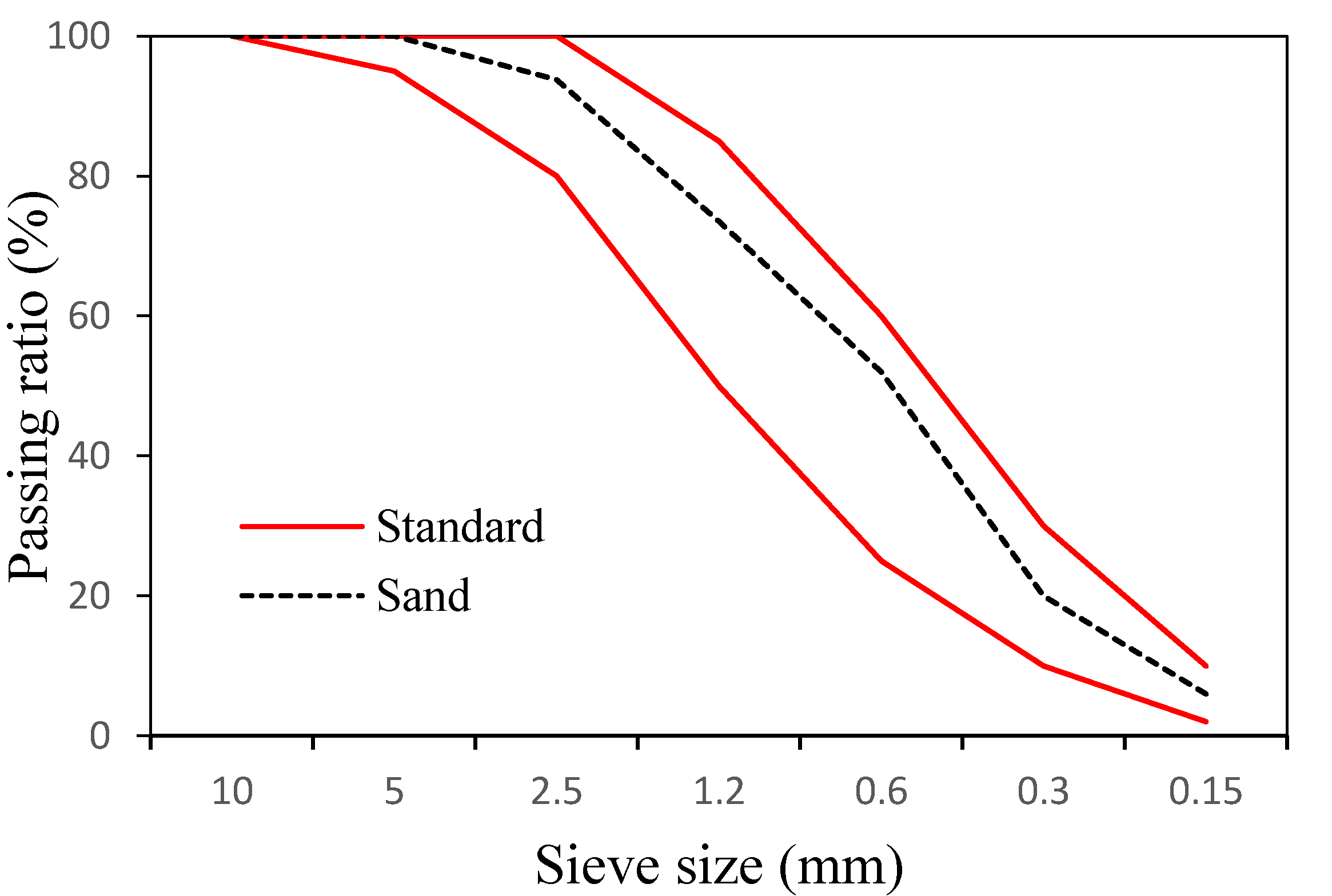
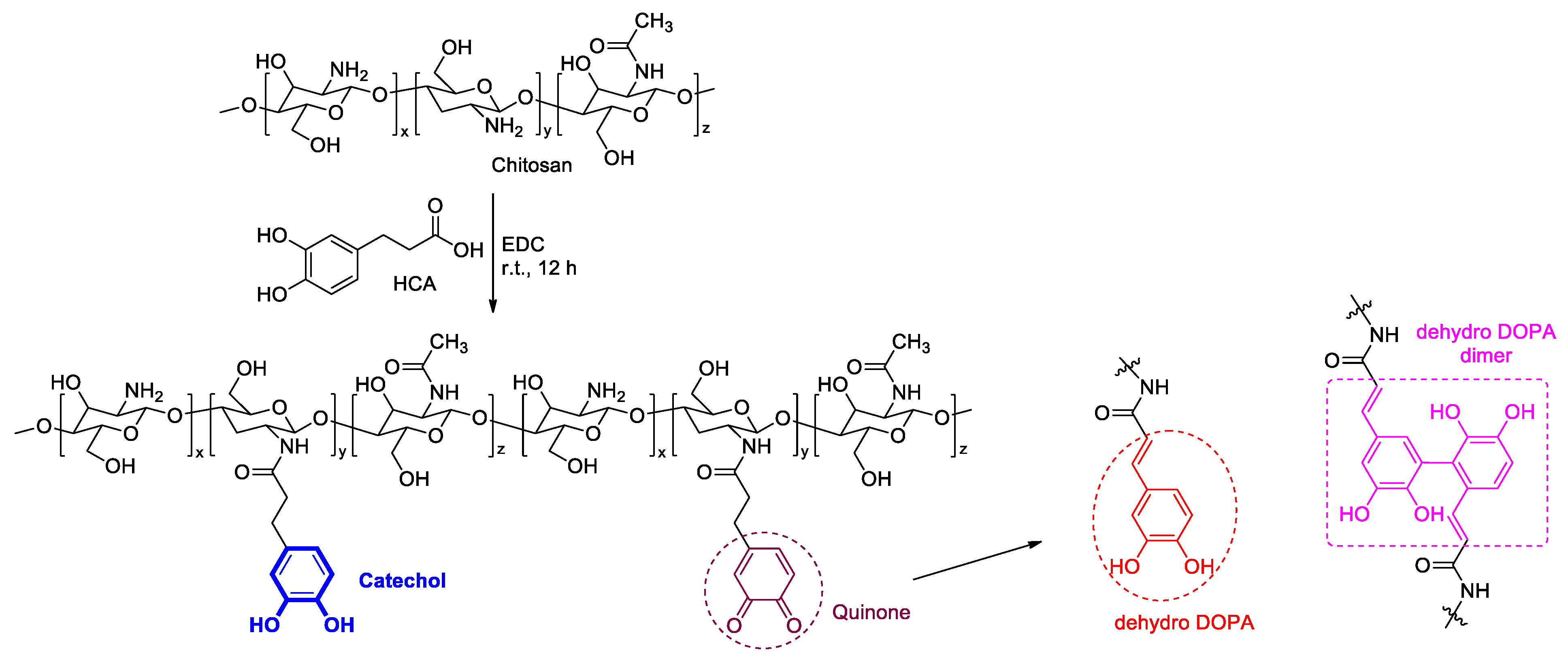

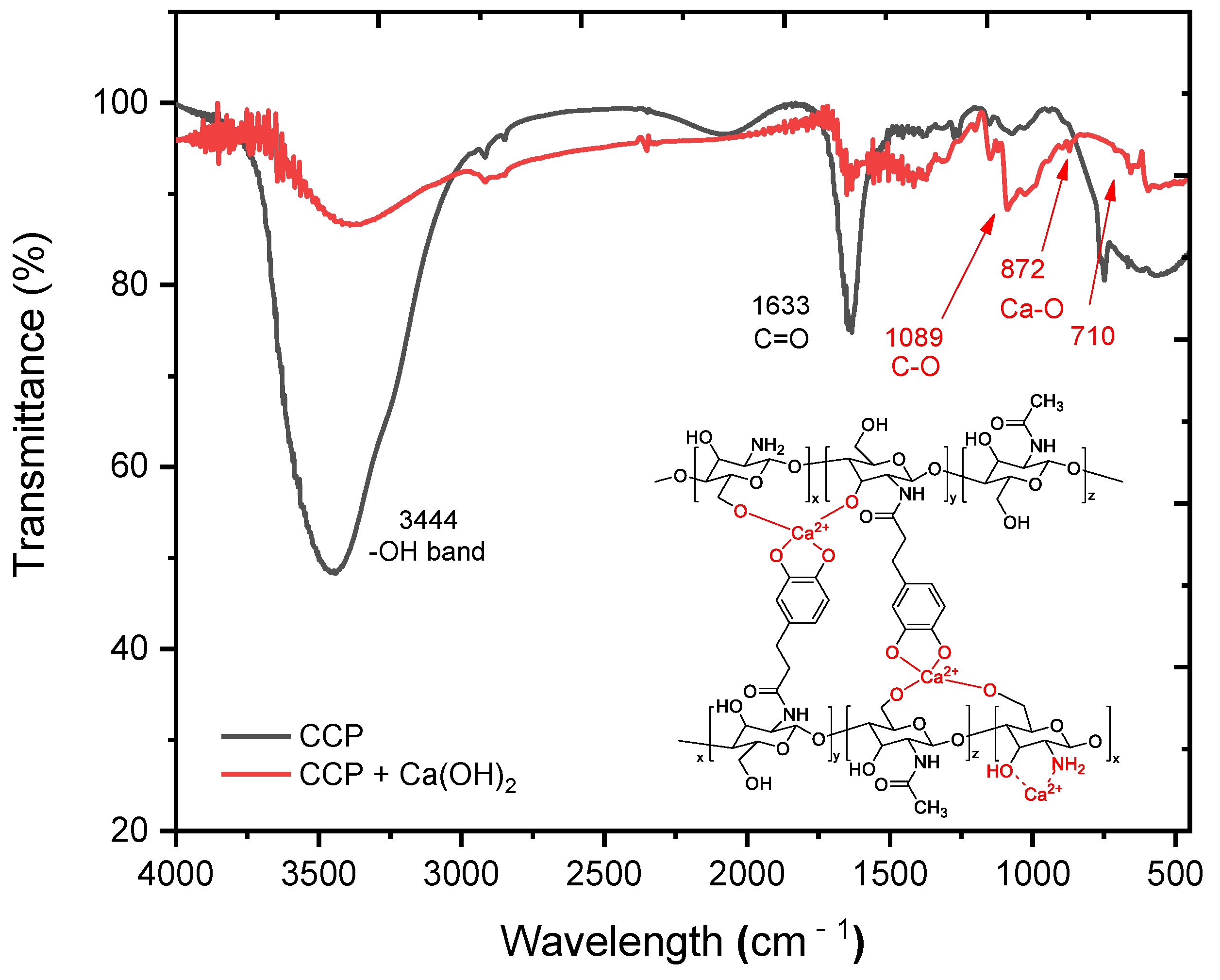
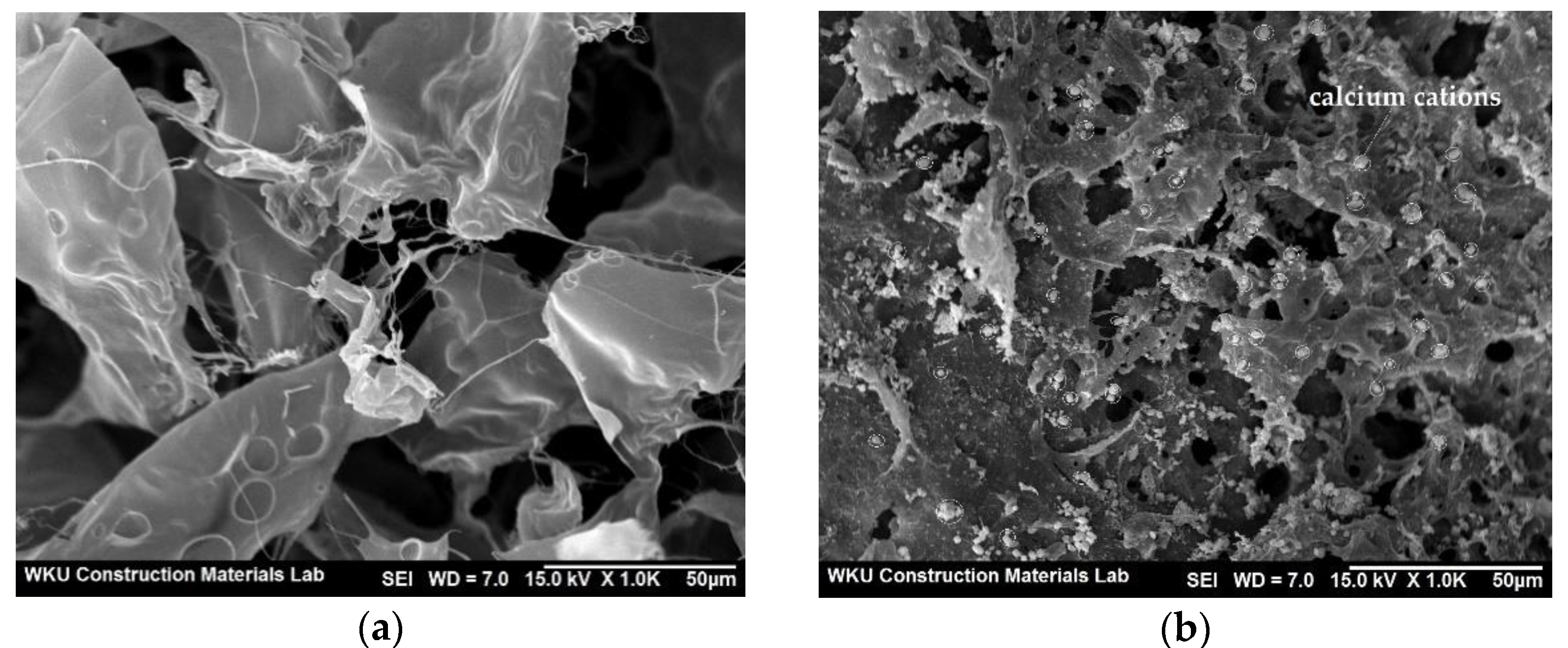

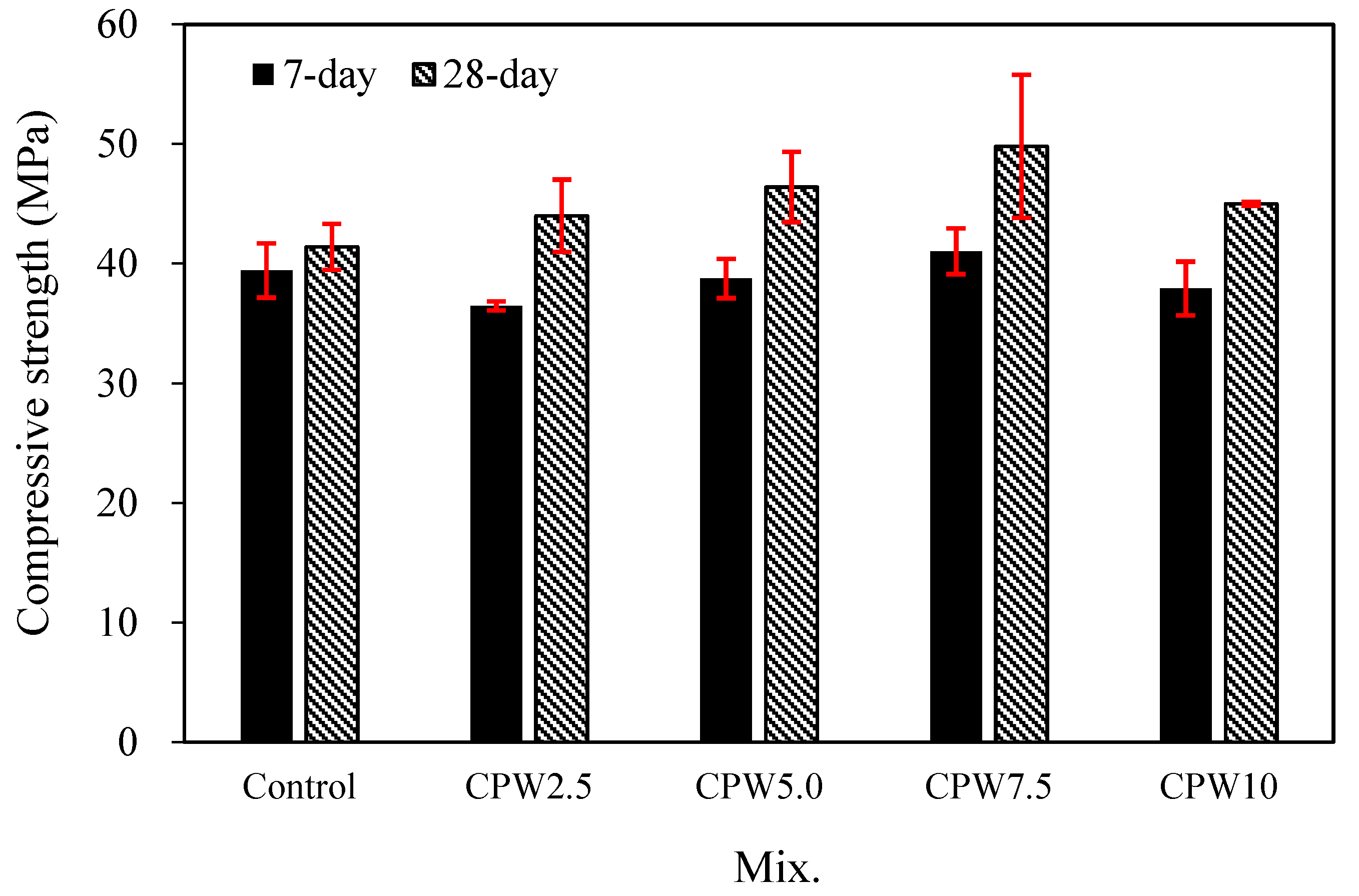
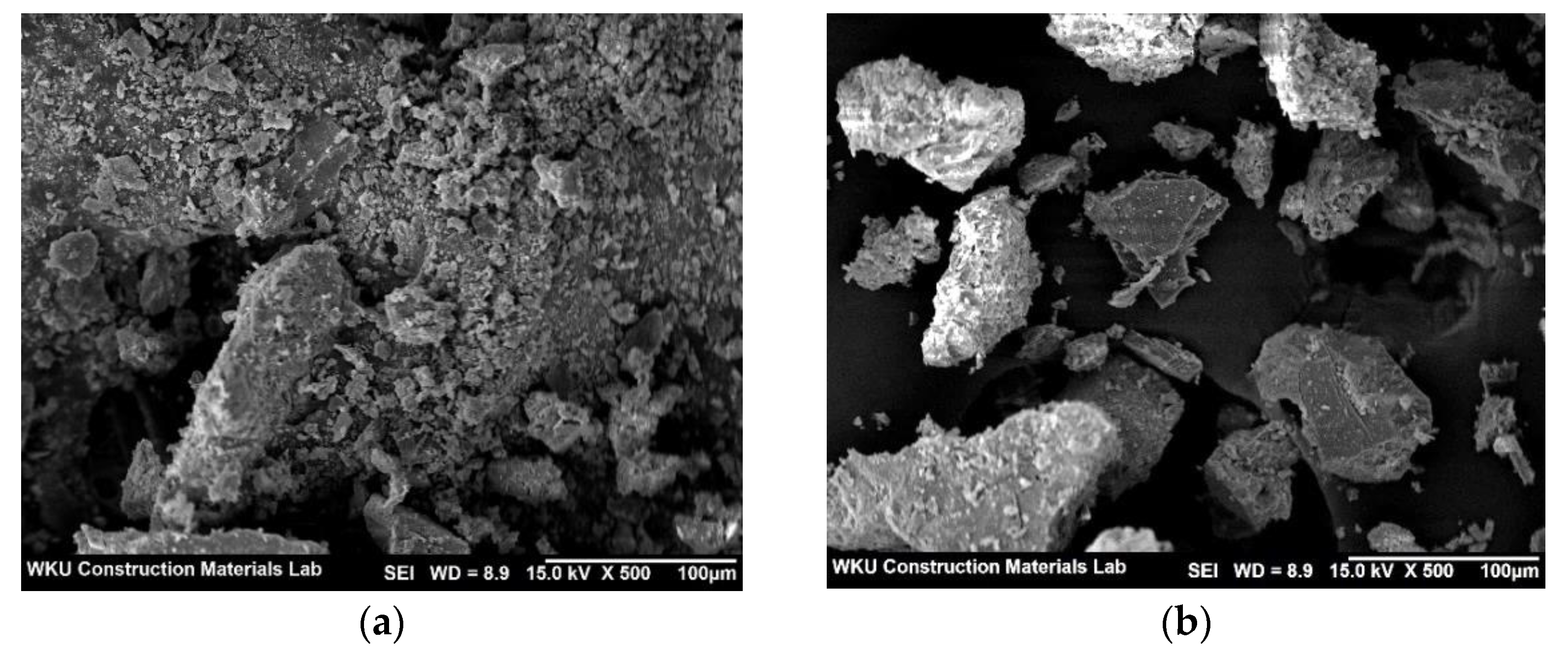
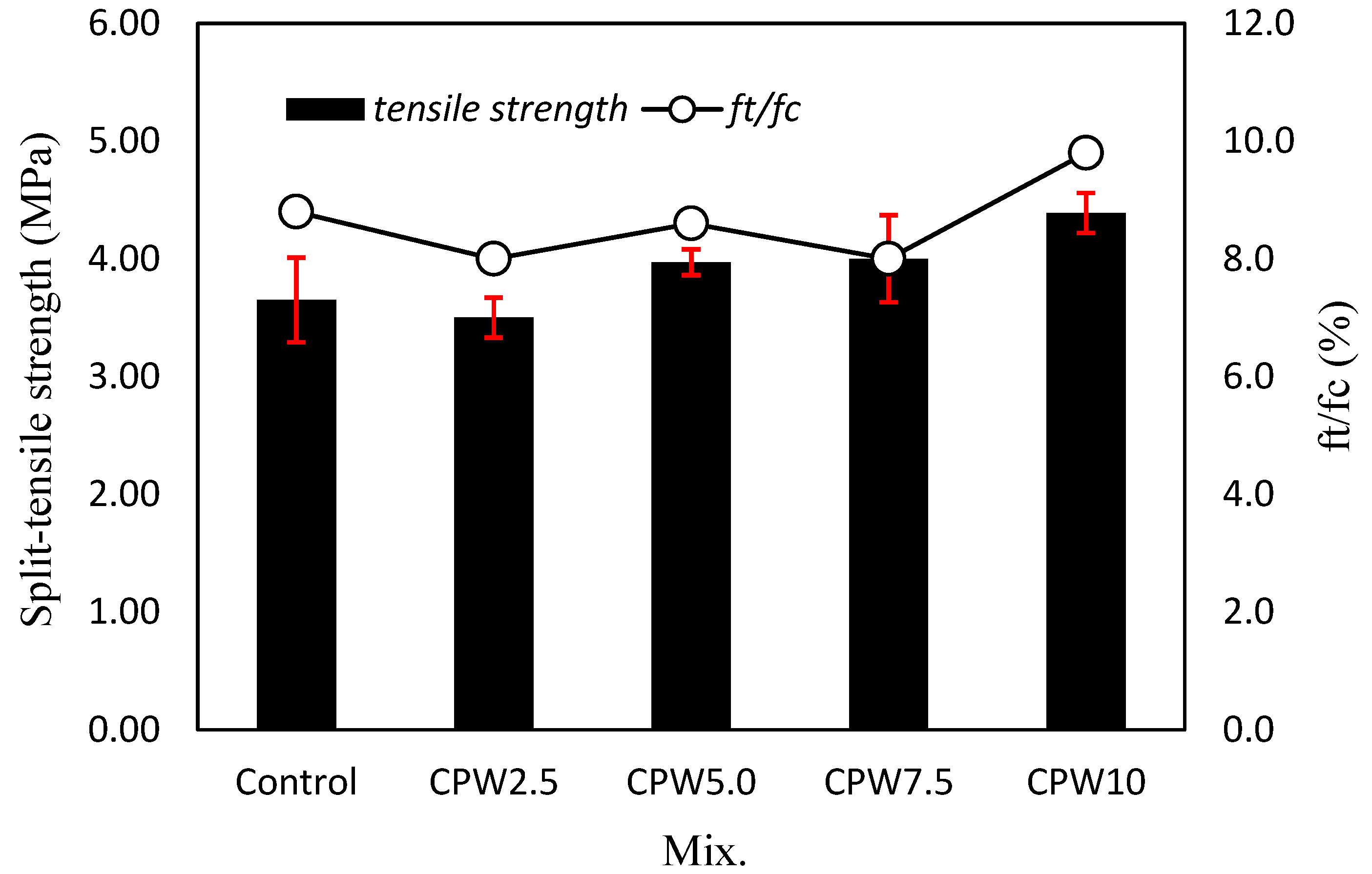
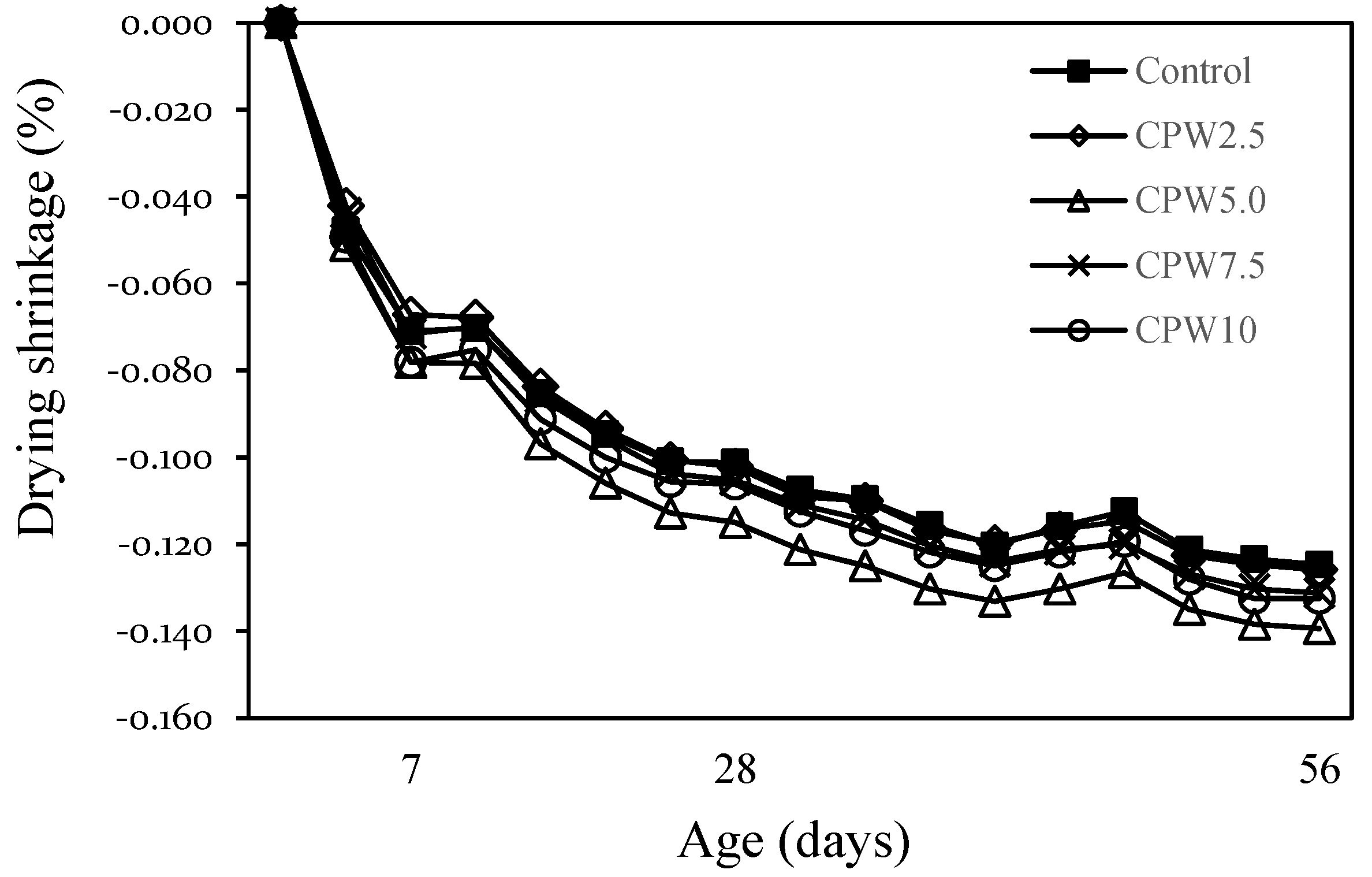
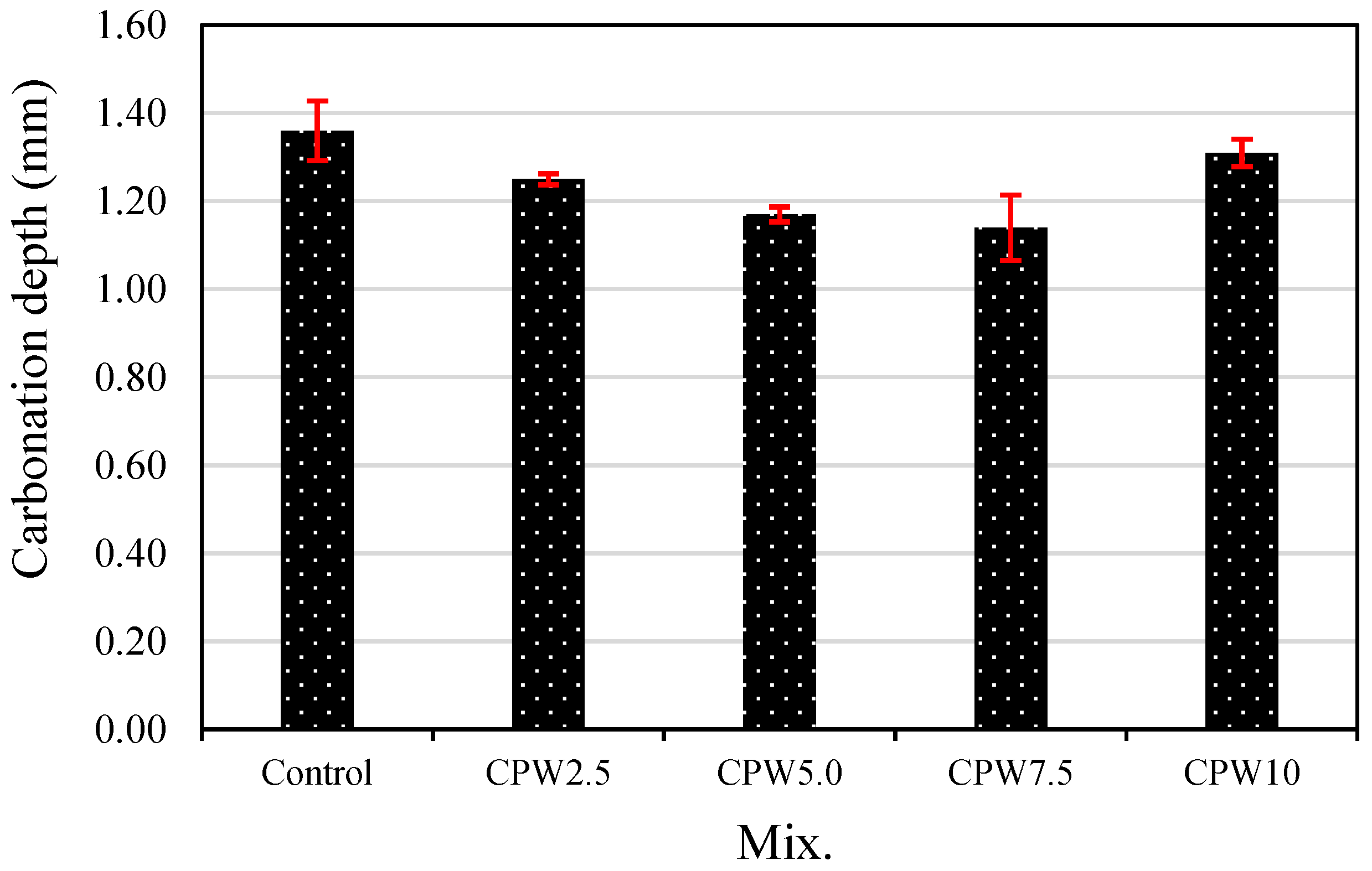

| Components | SiO2 | Al2O3 | Fe2O3 | CaO | MgO | K2O |
|---|---|---|---|---|---|---|
| Ratio (%) | 17.43 | 6.50 | 3.57 | 64.40 | 2.55 | 1.17 |
| Mix | CPW (%) | W/C (%) | Water (kg/m3) | Cement (kg/m3) | Sand (kg/m3) |
|---|---|---|---|---|---|
| Control CPW2.5 CPW5.0 CPW7.5 CPW10 | 0 2.5 5.0 7.5 10 | 50 | 170 | 340 | 739 |
Publisher’s Note: MDPI stays neutral with regard to jurisdictional claims in published maps and institutional affiliations. |
© 2021 by the authors. Licensee MDPI, Basel, Switzerland. This article is an open access article distributed under the terms and conditions of the Creative Commons Attribution (CC BY) license (https://creativecommons.org/licenses/by/4.0/).
Share and Cite
Choi, S.-J.; Bae, S.-H.; Lee, J.-I.; Bang, E.-J.; Ko, H.-M. Strength, Carbonation Resistance, and Chloride-Ion Penetrability of Cement Mortars Containing Catechol-Functionalized Chitosan Polymer. Materials 2021, 14, 6395. https://doi.org/10.3390/ma14216395
Choi S-J, Bae S-H, Lee J-I, Bang E-J, Ko H-M. Strength, Carbonation Resistance, and Chloride-Ion Penetrability of Cement Mortars Containing Catechol-Functionalized Chitosan Polymer. Materials. 2021; 14(21):6395. https://doi.org/10.3390/ma14216395
Chicago/Turabian StyleChoi, Se-Jin, Sung-Ho Bae, Jae-In Lee, Eun-Ji Bang, and Haye-Min Ko. 2021. "Strength, Carbonation Resistance, and Chloride-Ion Penetrability of Cement Mortars Containing Catechol-Functionalized Chitosan Polymer" Materials 14, no. 21: 6395. https://doi.org/10.3390/ma14216395







